Are you struggling to get clean, smooth cuts when working with MDF? If you’ve ever tried to cut this material with the wrong blade, you know it can be frustrating. MDF is dense and tough on tools, making it essential to choose the right circular saw blade for the job.
The challenge is, there are so many options out there. With so many circular saw blades for MDF boards, how do you know which one will give you the best results? You don’t want to waste time or money on the wrong blade.
In this guide, we’ll help you find the best circular saw blade for MDF, so you can cut like a pro. Whether you’re looking for the best 7 1/4 circular saw blade or the best blade for cutting MDF, we’ve got you covered.
Finding the best circular saw blade for MDF can be challenging, but we’ve made it simple for you. Let’s dive into what makes a great blade for MDF and how you can pick the perfect one for your project.
Understanding MDF and Its Cutting Requirements
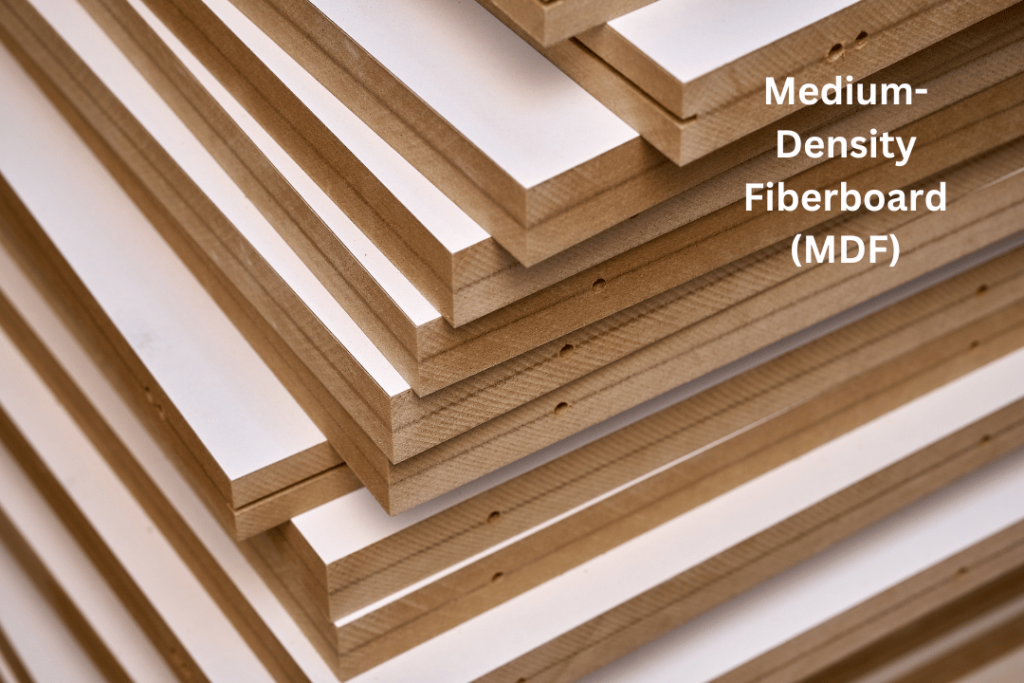
Medium-Density Fiberboard (MDF) is engineered from wood fibers, resin, and wax, making it denser and smoother than plywood. While these qualities make MDF ideal for furniture and paneling, they also create challenges during cutting. The material’s fine fibers and resin can dull blades quickly, and improper cuts can result in chipped edges or excessive tear-out.
To achieve clean, precise cuts, you need a blade specifically designed for MDF. These blades feature fine, closely spaced teeth and are often carbide-tipped to withstand the abrasive nature of MDF. Using the wrong blade not only compromises your project but can also lead to unnecessary wear and tear on your tools.
Understanding what makes MDF unique is the first step toward mastering its cutting requirements and achieving professional results.
Key Features of an Ideal MDF Circular Saw Blade
Choosing the right circular saw blade for MDF is critical for clean, smooth cuts. Here are the key features to look for:
- Tooth Count and Configuration
- Blades with a high tooth count (60+ for standard sizes) provide smoother, cleaner cuts, minimizing tear-out. Alternate top bevel (ATB) teeth are ideal for MDF due to their precision.
- Blade Material and Coating
- Carbide-tipped teeth resist the abrasive nature of MDF, ensuring longer blade life. Some blades also feature non-stick coatings to reduce resin build-up and overheating.
- Kerf Width
- A thinner kerf (the width of the cut) reduces material waste and requires less cutting force, which is essential for precision work on MDF.
- Anti-Vibration Features
- Look for blades with anti-vibration slots or laser-cut designs to reduce noise and deliver smoother cuts.
- Durability
- MDF is tough on tools, so durability matters. Blades with enhanced toughness can handle repeated cuts without losing sharpness.
By focusing on these features, you can ensure your blade is up to the task, delivering professional-grade results every time.
Top Circular Saw Blades for MDF
Here are some of the best circular saw blades that excel in cutting MDF, ensuring clean, precise results:
1. TOLESA 7 1/4 Circular Saw Blade 60 Teeth For MDF
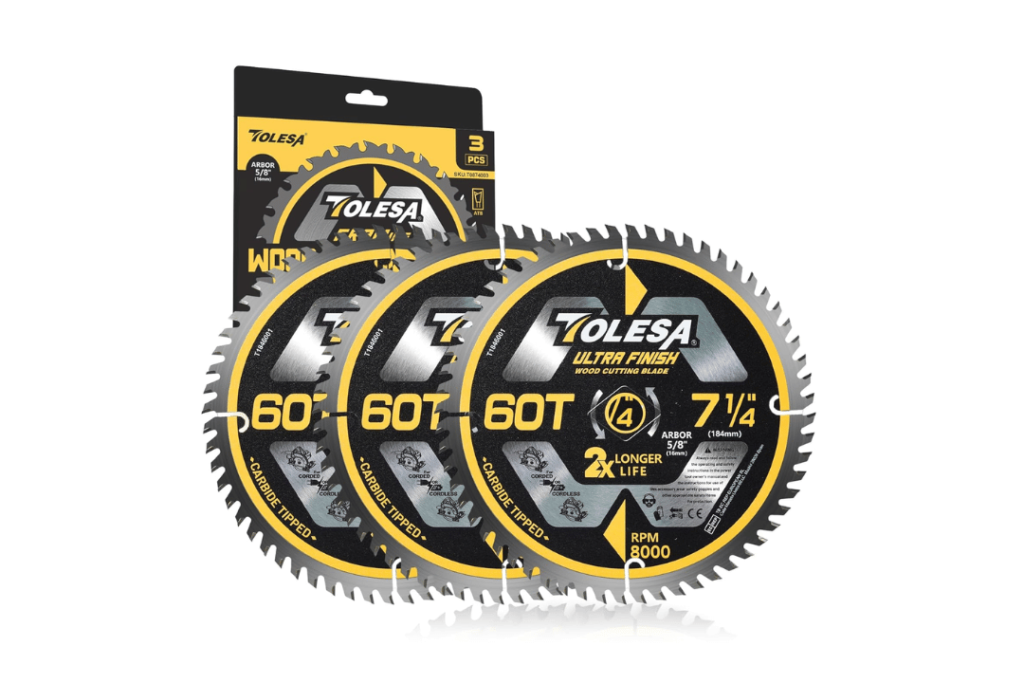
The TOLESA 7 1/4 Circular Saw Blade stands out as one of the best circular saw blades for MDF. Designed for precision and durability, this blade features 60 carbide-tipped teeth and a super-thin kerf, making it an excellent choice for cutting MDF, plywood, and other engineered wood materials. Its compatibility with most major circular saw brands ensures versatility for professionals and DIYers alike.
Key Features
- Material and Build
- Made with premium alloy steel and industrial-grade tungsten carbide teeth.
- Hardened for abrasion resistance and precision cutting.
- Noise-reducing perforations for quieter operation.
- Performance Highlights
- Super-thin laser-cut kerf delivers fast and smooth cuts.
- ATB (Alternate Top Bevel) teeth design ensures clean cuts with reduced chipping.
- Thermal expansion grooves improve heat dissipation, prolonging blade life.
- Suitable Applications
- Ideal for cutting MDF, plywood, OSB, softwood, hardwood, laminate, and chipboard.
- Compatible with popular brands like Bosch, Dewalt, Makita, and more.
Pros:
- Clean and precise cuts with minimal chipping.
- High durability and heat resistance.
- Fits most circular saws on the market.
- Reduces noise for a better work environment.
Cons:
- Limited to 7 1/4-inch saws.
- Not ideal for heavy-duty, thick material cuts.
Ideal User
The TOLESA 7 1/4 Circular Saw Blade is perfect for professionals and hobbyists who need a reliable, versatile blade for clean MDF cuts. It’s a great choice for carpenters, woodworkers, and DIY enthusiasts looking for precision and efficiency in their projects.
If you want smooth, hassle-free cuts on MDF and other engineered woods, the TOLESA 7 1/4 Circular Saw Blade is an excellent option.
2. CRALY 3-3/8 Inch 36 Teeth Fine Finish MDF Cutting Circular Saw Blade
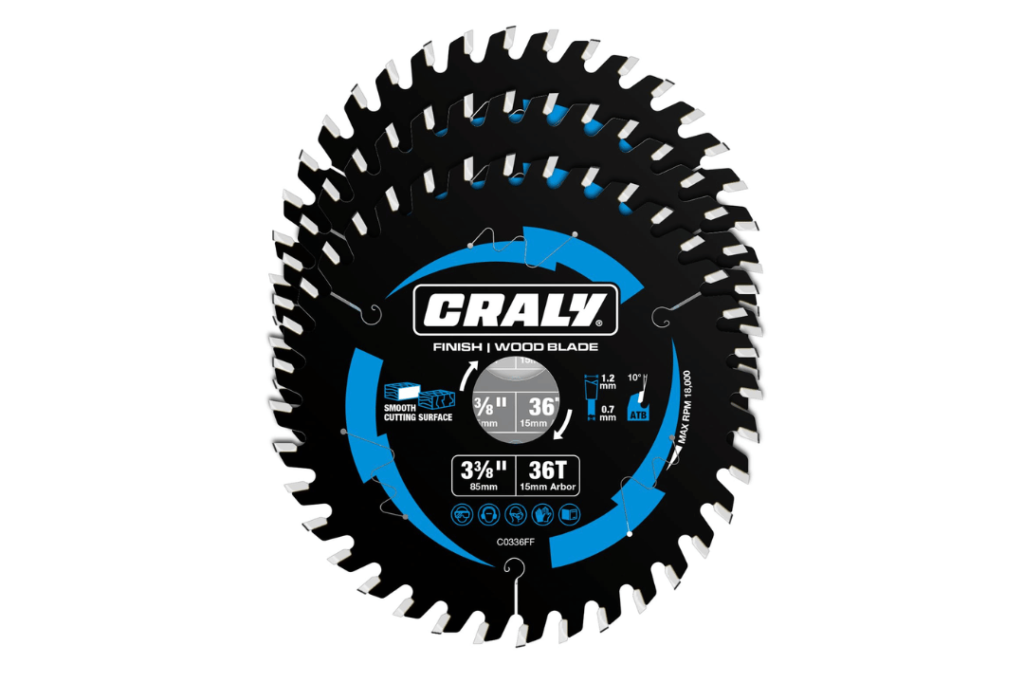
The best circular saw blade for MDF offers precision and durability. This fine-finish blade ensures smooth, clean cuts in MDF and other materials, making it ideal for professional and DIY projects. Its high-density tungsten carbide teeth and innovative features deliver long-lasting performance and consistent results.
Key Features
Material and Build
- Carbide-tipped teeth for enhanced durability and precision.
- Black Ice non-stick coating reduces heat, friction, and corrosion.
- Thin kerf design ensures faster, more accurate cuts with less material waste.
Performance Highlights
- Laser-cut expansion slots reduce vibration and improve stability.
- Stabilizer vents enhance balance, minimizing noise during cutting.
- Durable carbide material ensures a longer blade life even with tough materials like MDF.
Suitable Applications
- Perfect for cutting MDF, plywood, OSB, laminated wood, and soft/hardwood.
- Works well with both corded and cordless circular saws.
Pros:
- Produces smooth, clean cuts with minimal chipping.
- Thin kerf improves cutting speed and accuracy.
- Non-stick coating protects the blade and ensures efficient performance.
- Compatible with a wide range of circular saws.
- Long-lasting carbide construction reduces the need for frequent blade replacements.
Cons:
- Limited to small-diameter saws (3-3/8 inch).
- Not suitable for cutting metal or other non-wood materials.
Ideal User
This blade is perfect for professionals and DIY enthusiasts who need clean, precise cuts in MDF and similar materials. It’s ideal for those working on cabinetry, furniture-making, or home improvement projects. If you value speed, accuracy, and durability in a compact blade, the CRALY 3-3/8 Inch Fine Finish Blade is a great choice.
3. 7-1/4″ Ultra MDF Finish Circular Saw Blade
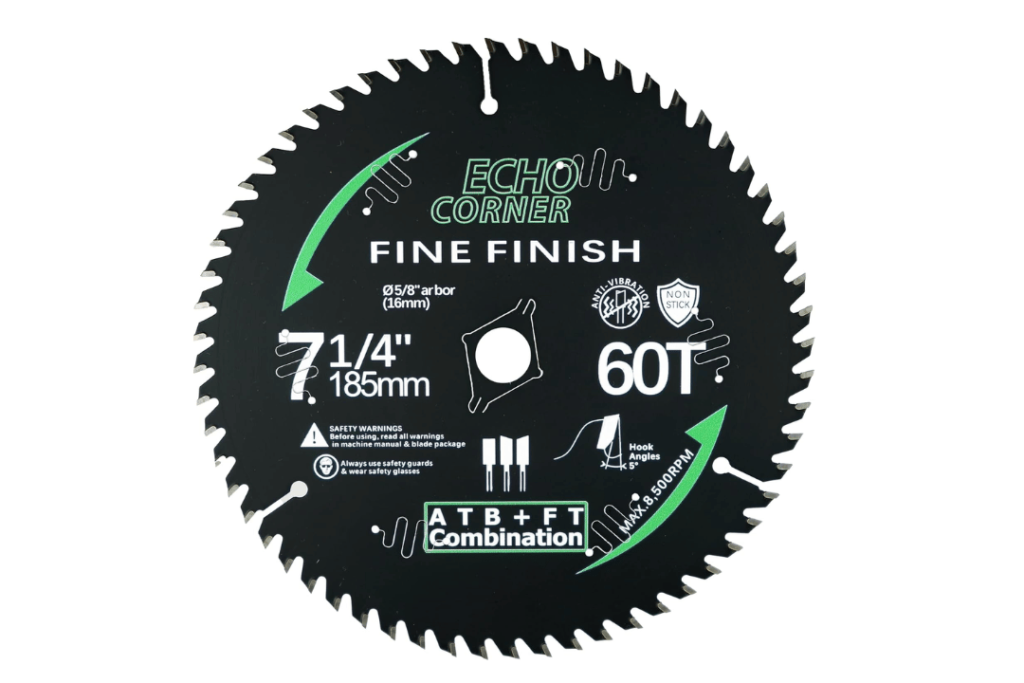
The best circular saw blade for MDF is designed to deliver precise, clean cuts with ease. Whether you’re working on plywood, MDF, or plastic, this blade ensures smooth finishes and reliable performance. With its 60 sharp teeth and durable construction, it’s ideal for both professional contractors and DIY enthusiasts.
Key Features
Material and Build
- Made of industrial-grade C3 tungsten carbide for long-lasting performance.
- Tough non-stick coating minimizes friction, rust, and overheating.
- Alloy steel construction adds strength and durability.
Performance Highlights
- Ultra-thin ATB/FT combination teeth offer sharp and lightweight cutting action.
- Laser-cut stabilizer vents reduce noise, vibration, and blade warping.
- Suitable for high-speed cutting with a max RPM of 8,500.
Suitable Applications
- Perfect for MDF, plywood, laminate, plastic, veneer, and engineered wood.
- Works well for rip cuts, crosscuts, and fine-finish applications.
Pros:
- Produces clean, precise cuts with minimal effort.
- Non-stick coating prevents gumming and overheating.
- Lightweight design enhances ease of use and maneuverability.
- Compatible with worm-drive and standard circular saws.
- Long-lasting carbide teeth reduce the need for frequent sharpening.
Cons:
- May struggle with extremely thick or dense materials.
- Not recommended for metal or masonry cutting.
Ideal User
This blade is ideal for woodworkers, cabinetmakers, and DIYers who frequently cut MDF, plywood, and similar materials. Its precision and durability make it a great fit for home improvement projects, furniture-making, and construction tasks requiring a fine finish. If you need a reliable, high-speed blade that delivers professional results, this is an excellent choice.
4. NICAVKIT 3Pack 6-1/2-Inch 40 Teeth Fine Finish MDF Cutting Circular Saw Blade
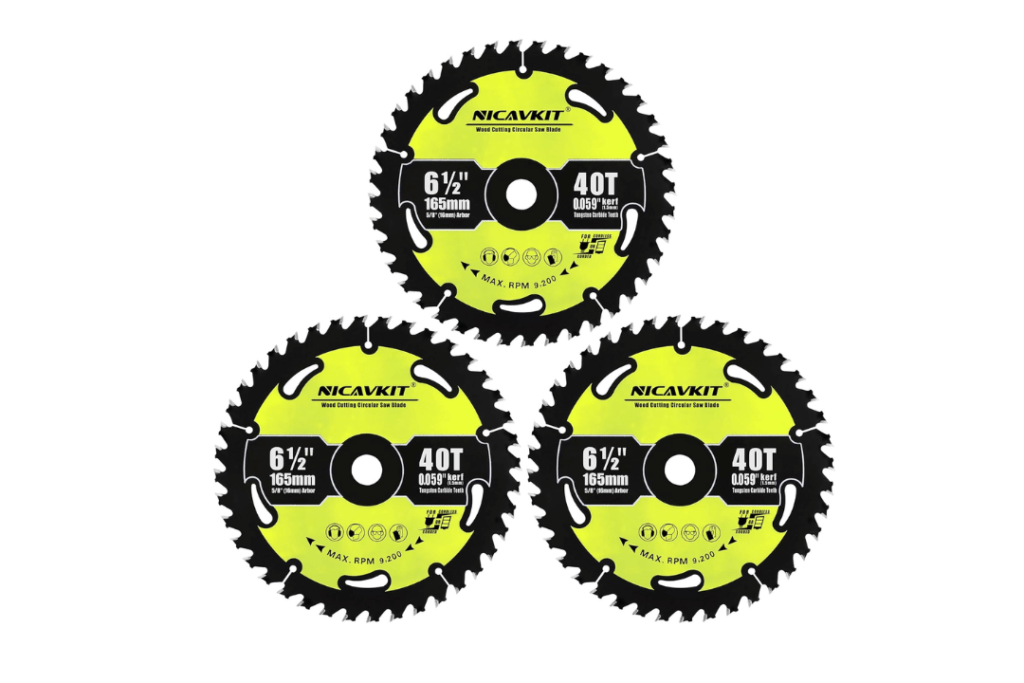
The best circular saw blade for MDF ensures clean and precise cuts, making it a reliable choice for woodworking projects. With its tungsten carbide-tipped teeth and advanced features, this blade is perfect for achieving smooth finishes on MDF, plywood, and other materials. Its efficient design enhances cutting speed and reduces waste, ideal for professionals and DIYers alike.
Key Features
Material and Build
- Tungsten carbide-tipped teeth for durability and sharpness.
- 1.5 mm thin kerf for faster and smoother cuts.
- Solid, hardened steel body ensures rust resistance and long-lasting performance.
Performance Highlights
- ATB (Alternating Top Bevel) tooth design improves cutting efficiency and provides a cleaner finish.
- Heat dissipation coating prevents overheating and extends blade life.
- Noise-reducing heat dissipation holes minimize vibration for quieter operation.
Suitable Applications
- Ideal for cutting MDF, plywood, OSB, chipboard, and laminated wood.
- Compatible with both corded and cordless circular saws.
Pros:
- Provides smooth and precise cuts with minimal effort.
- Durable carbide teeth last longer and require less maintenance.
- Thin kerf design improves cutting speed and reduces material waste.
- Heat dissipation coating prevents blade warping during extended use.
- Comes in a 3-pack for added value and convenience.
Cons:
- Limited to a 6-1/2-inch diameter, which may not suit larger saws.
- Not designed for metal or non-wood materials.
Ideal User
This blade is an excellent choice for woodworking enthusiasts, carpenters, and DIYers who often work with MDF, plywood, and similar materials. Its durability and smooth cutting performance make it perfect for projects like furniture-making, cabinetry, and home repairs. If you need clean, efficient cuts with a reliable and cost-effective blade, this product is a great option.
5. CRALY 8-1/4 Inch 40 Teeth Fine Finish for MDF
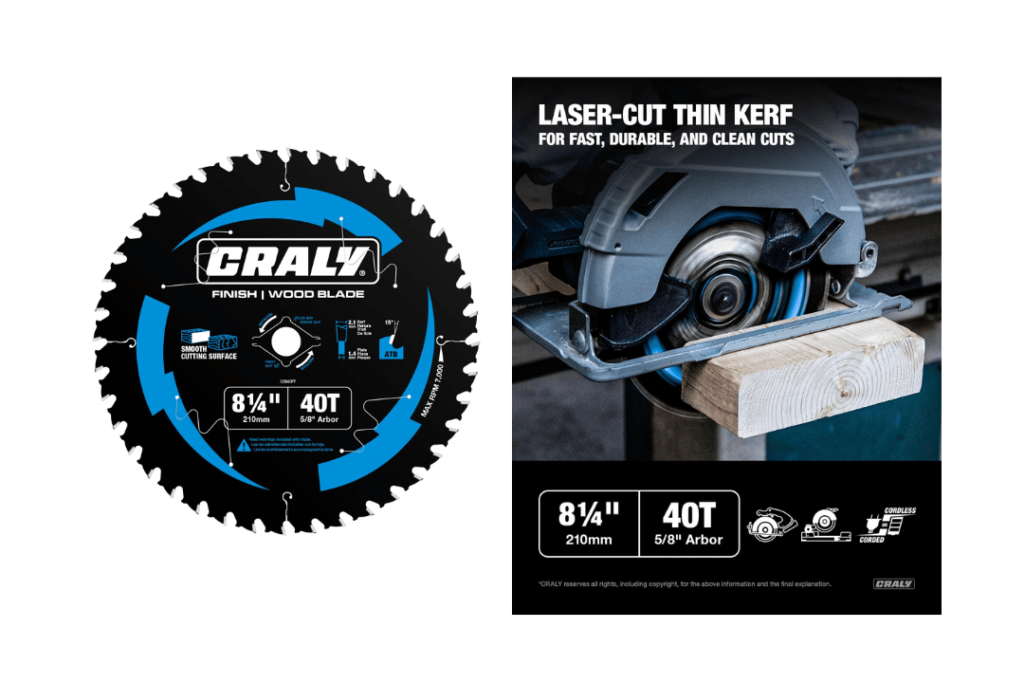
The CRALY 8-1/4 Inch 40 Teeth Fine Finish Wood Cutting Circular Saw Blade is a top contender for the best circular saw blade for MDF. Designed for precision, durability, and versatility, this blade ensures smooth cuts and exceptional performance across MDF, plywood, OSB, and laminated wood.
Key Features
- Material and Build:
Made with high-density tungsten carbide tips, this blade offers extended durability and sharpness. The Black Ice non-stick coating minimizes friction, heat, and corrosion, ensuring a smooth cutting experience. - Performance Highlights:
- Thin kerf design for faster, cleaner cuts.
- Laser-cut hardened steel body for stability and reduced vibration.
- Stabilizer vents and expansion slots reduce noise and improve blade longevity.
- Suitable Applications:
Ideal for cutting MDF, plywood, OSB, laminated materials, softwood, and hardwood. Compatible with both corded and cordless circular saws.
Pros:
- Durable carbide tips for extended blade life.
- Thin kerf for precise, efficient cutting.
- Reduced vibration for smoother cuts.
- Non-stick coating prevents gumming and heat buildup.
- Versatile for various materials and saw types.
Cons:
- May not be ideal for extremely fine detail work.
- Slightly higher price compared to standard blades.
Ideal User
This blade is perfect for woodworkers, contractors, and DIY enthusiasts who prioritize clean, efficient cuts. Whether you’re working on furniture, cabinetry, or home improvement projects, the CRALY blade is a reliable choice for handling MDF and other wood-based materials with ease.For anyone looking for the best circular saw blade for MDF, this product delivers the durability, precision, and versatility needed to tackle any woodworking challenge.
How to Choose the Best Circular Saw Blade
Selecting the right circular saw blade for MDF depends on several factors. Here’s what to consider:
1. Project Requirements
- Type of Cuts: If you need clean edges for visible surfaces, prioritize blades with a high tooth count. For rough cuts, a standard blade may suffice.
- Volume of Work: For frequent use, invest in a durable, carbide-tipped blade designed for longevity.
2. Compatibility
- Ensure the blade’s diameter and arbor size match your saw. Check your saw’s manual for recommended specifications.
3. Budget vs. Quality
- While cheaper blades may seem appealing, investing in high-quality options reduces the risk of chipping and extends blade life. Balance upfront cost with long-term value.
4. Blade Coating and Design
- Non-stick coatings can minimize resin build-up, while anti-vibration slots reduce noise and enhance precision.
5. Versatility
- If you work with various materials, choose a blade that performs well across MDF, plywood, and other composites.
By aligning your blade choice with these factors, you’ll achieve optimal results for your projects while ensuring your tools operate at peak efficiency.
Tips for Cutting MDF Like a Pro
Achieving clean, precise cuts on MDF requires more than just the right blade. Follow these tips to elevate your cutting game:
1. Prepare Your Workspace
- Work in a well-ventilated area to manage dust.
- Use a dust collection system or wear a high-quality mask to protect yourself from fine particles.
2. Set Up Your Tools
- Ensure your saw blade is properly installed and securely tightened.
- Adjust the blade depth so it extends slightly beyond the thickness of the MDF for cleaner cuts.
3. Use a Cutting Guide
- Clamp a straight edge or use a track saw to guide your cuts. This prevents wandering and ensures precision.
4. Prevent Tear-Out
- Cut with the finished side facing up when using a circular saw, as the teeth cut on the upward stroke.
- For extra protection, place masking tape along the cut line to minimize chipping.
5. Go Slow and Steady
- Apply steady pressure and let the blade do the work. Rushing can lead to rough edges and overheating.
6. Clean and Maintain Your Blade
- After cutting, clean the blade to remove resin build-up. Regular maintenance ensures consistent performance and extends blade life.
With these tips, you can handle MDF like a pro, achieving smooth, professional-quality cuts every time.
Common Mistakes to Avoid When Cutting MDF
Even with the best tools, simple mistakes can compromise your results. Avoid these pitfalls:
1. Using the Wrong Blade
- General-purpose blades may seem convenient but can lead to rough edges, tear-out, or excessive wear. Always choose a blade designed for MDF.
2. Skipping Blade Maintenance
- Resin build-up and dull teeth can ruin cuts and strain your saw. Clean and sharpen your blade regularly to maintain performance.
3. Rushing the Cut
- MDF requires a slow, steady approach. Pushing too fast increases the risk of chipping and overheating the blade.
4. Neglecting Safety
- MDF dust is fine and potentially harmful. Failing to wear a mask, use dust extraction, or work in a ventilated area can be hazardous.
5. Improper Setup
- Not securing the MDF or failing to use a guide can result in uneven or inaccurate cuts. Take the time to set up your workpiece and tools properly.
By steering clear of these mistakes, you can ensure better results and prolong the life of your tools.
Conclusion
Cutting MDF requires precision, patience, and the right equipment. The right circular saw blade can make all the difference, delivering clean, smooth cuts while protecting your tools from unnecessary wear. Investing in a quality blade designed for MDF saves time, reduces frustration, and enhances your project outcomes.
By understanding MDF’s unique cutting requirements, selecting the ideal blade, and following best practices, you can achieve professional-grade results for any project. Ready to elevate your woodworking game? Share your thoughts or experiences in the comments below!
FAQs
1. Do I need a specific blade for MDF vs. plywood?
Yes, MDF is denser and more abrasive, requiring a blade with finer teeth and carbide-tipped edges for clean cuts.
2. How often should I replace my MDF blade?
It depends on usage, but signs of dullness (e.g., rough cuts or burning) indicate it’s time for replacement or sharpening.
3. Can I use the same blade for MDF and hardwood?
While some blades handle both materials, MDF’s abrasiveness can dull blades quickly, so it’s best to have dedicated blades for each material.
4. What is the best tooth count for cutting MDF?
A blade with a high tooth count, typically 60 to 80 teeth for a 10-inch blade, is ideal for clean and precise cuts on MDF.
5. Can I use a jigsaw or other tools instead of a circular saw for MDF?
Yes, but a jigsaw is better suited for curved or intricate cuts, while a circular saw provides straighter, smoother edges for larger pieces.
6. Why does MDF create so much dust, and how can I manage it?
MDF’s dense fiber and resin composition generate fine dust when cut. Use a dust collection system, wear a mask, and work in a well-ventilated area to minimize exposure.
7. Are there specific safety measures when cutting MDF?
Always wear safety goggles, a dust mask, and hearing protection. Secure the MDF and ensure your blade guard is functional before cutting.
8. Can I use a table saw instead of a circular saw for MDF?
Absolutely. A table saw equipped with the right blade can provide even more precision and stability, especially for repetitive cuts.
9. What happens if I use a dull blade on MDF?
A dull blade can cause uneven cuts, excessive chipping, overheating, and even strain on your saw’s motor. Always ensure your blade is sharp and clean.
10. Is it necessary to sand MDF edges after cutting?
Yes, lightly sanding the edges helps smooth out any roughness or minor chipping, especially if the edges will be painted or visible.
11. How can I reduce tear-out on MDF when using a circular saw?
Use a high-tooth-count blade, cut with the finished side up, and apply masking tape along the cut line for added protection.
12. Can I cut thin MDF sheets with the same blade?
Yes, but thin sheets can flex during cutting. Support the sheet fully and use clamps to prevent movement for a cleaner cut.

